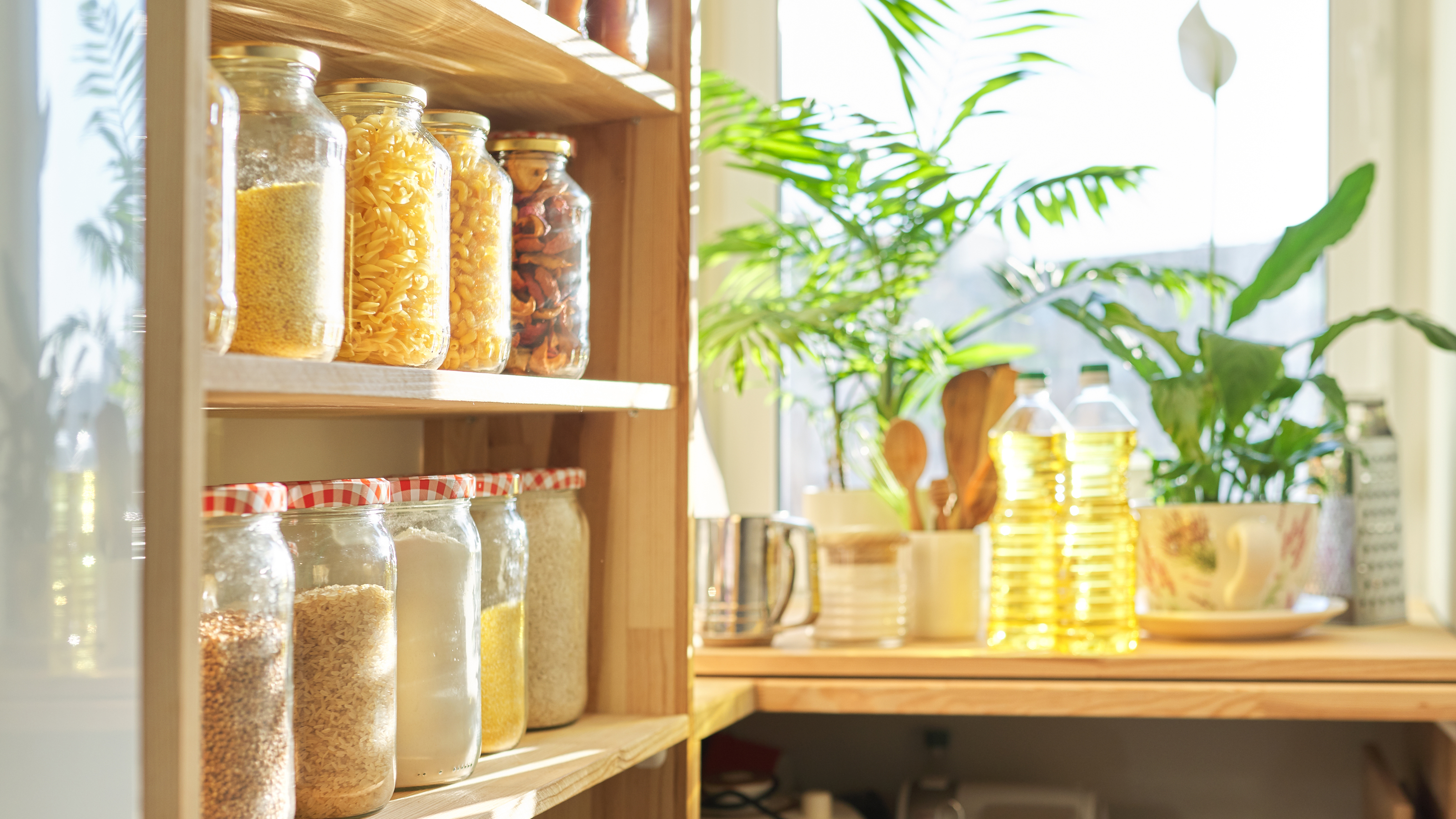
These pantry shelving ideas will make your kitchen life so much easier. Trust us when we say that there's more to organizing pantry shelves than meets the eye. From convenient pull-out designs to clever corner shelving, there's a lot to think about when kitting out a new pantry.
Choosing the best shelving system is a big part of learning how to organize a pantry properly. Thoughtfully designed, correctly spaced out shelves make a huge difference to how much you'll enjoy using this space – and how quickly you'll be able to locate the ingredients you need.
Top tips for organizing pantry shelves
When you are designing and organizing pantry shelves, there's quite a lot to think about, In the first instance, Graeme Smith, Head of Retail and Commercial Design at Life Kitchens, recommends preparing 'for every eventuality.' This means 'thinking outside the box' and beyond the simplest shelving construction. Consider 'removable cutlery drawers - so that you have the option of additional drawer space should the occasion arise', and 'why not incorporate wine racks and plate racks to your pantry or larder, ensuring that space is maximized and that you can store unusually shaped items?'
Smith's top tip, though, is to incorporate stepped shelving – it works like a dream inside deeper pantry shelves, and 'not only increases space but also allows you to see what you have in the cupboard with ease. Make sure you are using non-slip bases on each shelf, and if you’re using a corner unit then any shelf must have a smooth glide to prevent spillages.'
Making the correct choices in terms of what goes where is also essential to keep your kitchen pantry ideas looking polished and use of the space streamlined. Val Stones, baking expert at stairlift and home lift company Stannah recommends putting 'frequently used ingredients (like rice and pasta) on a shelf at eye level, herbs and spices above this, then heavier tinned items on the bottom shelves.' Then, use the top, most difficult-to-reach shelf for 'accessories that are seasonal, ingredients that are only used every so often, or special occasion items like jam labels.'
Blessed with a walk-in pantry? Stones' top walk-in pantry shelving ideas include organizing everything 'into labeled plastic boxes that are well within reach. The lighter items, such as bun cases, cake tin cases, sprinkles, and spare aprons are placed on the top shelves. On the middle shelves, I put flours, sugars, and dried fruits/goods. On the bottom shelves, I place preserves, oils, syrups, and my huge collection of cookery books. All the weight is on the bottom shelves which keeps them stable.'
The good news? You can easily replicate this inside your pantry, especially if you have some pantry organizers to hand. Whether your pantry is an odd shape, it's too small or there are fewer shelves in there than you'd like, an organizer can help tackle this problem and assist when it comes to storing even more pantry staples.
1. Vary the spaces between shelves for neat organization
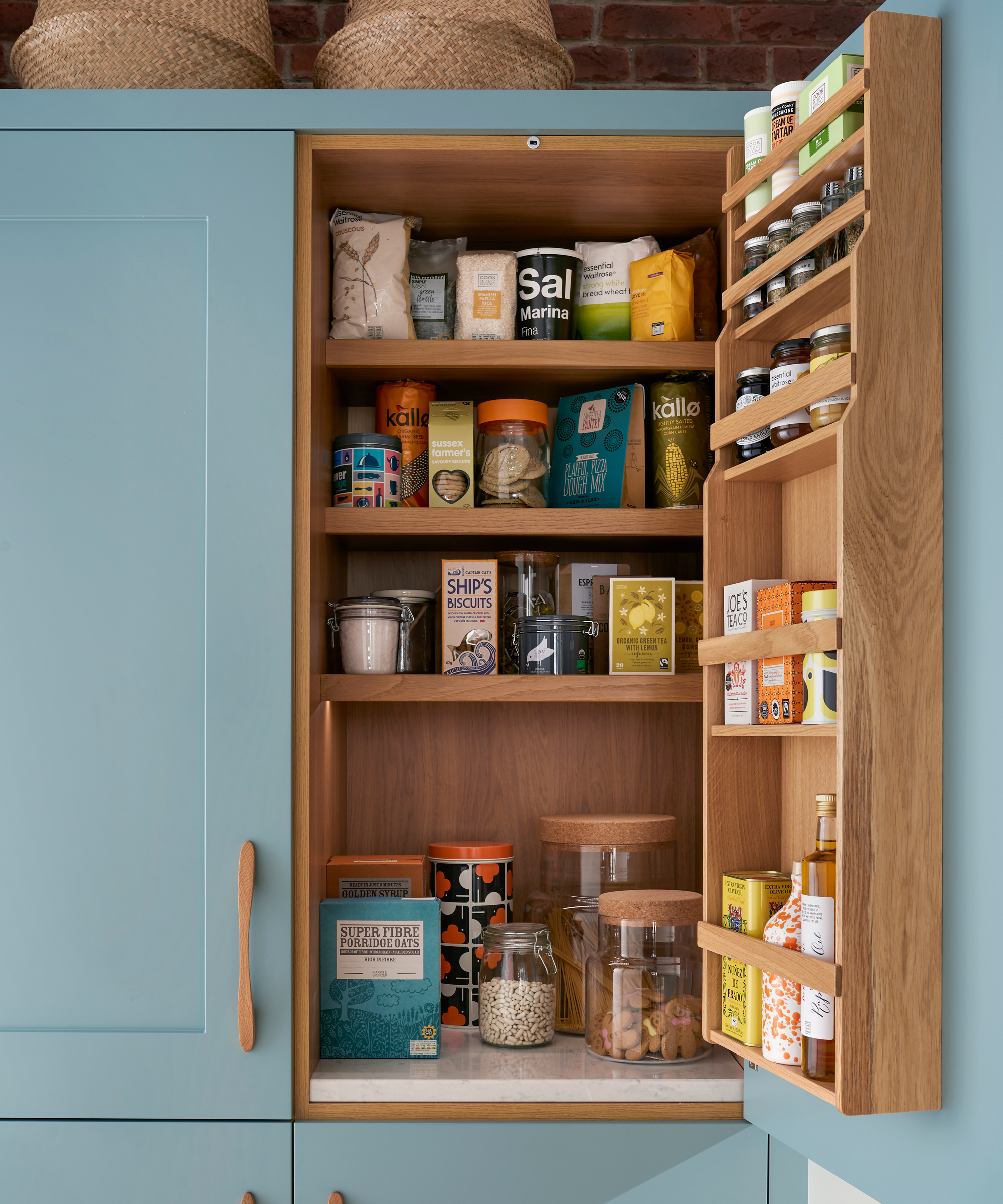
This is one of the essential pantry storage ideas that will make everything else easier. Cooking ingredients come in a wide variety of packaging of different sizes and heights, and your pantry shelving should reflect that. Rather than positioning the shelves at an equal distance, leave more space between the lower shelf and the upper shelves. The bottom shelf can then be used for larger, heavier items, perhaps even your food processor, whereas the upper, more narrowly spaced shelves can house condiments and other jars.
2. Line the back of your shelves with wallpaper
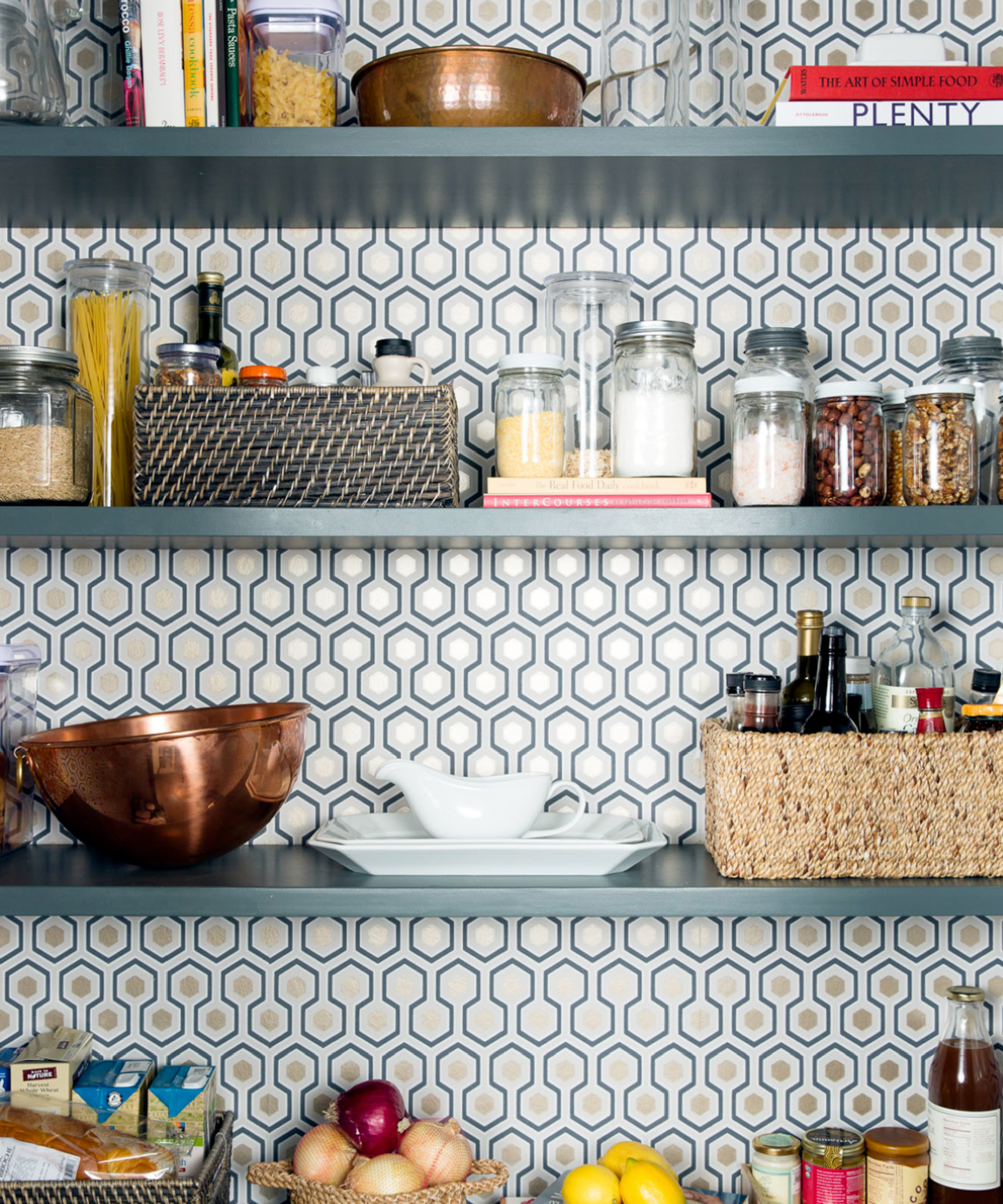
It's not just the quality and design of the shelving itself that matters. Think about what's behind your shelves when you open your pantry. If your pantry is unpainted and you want a more elegant, bespoke look, wallpapering is an easy and versatile shelving idea to set off your decor.
This gorgeous wallpapered pantry has been created by Turek Interiors.
3. Line long shelves with vintage storage crates
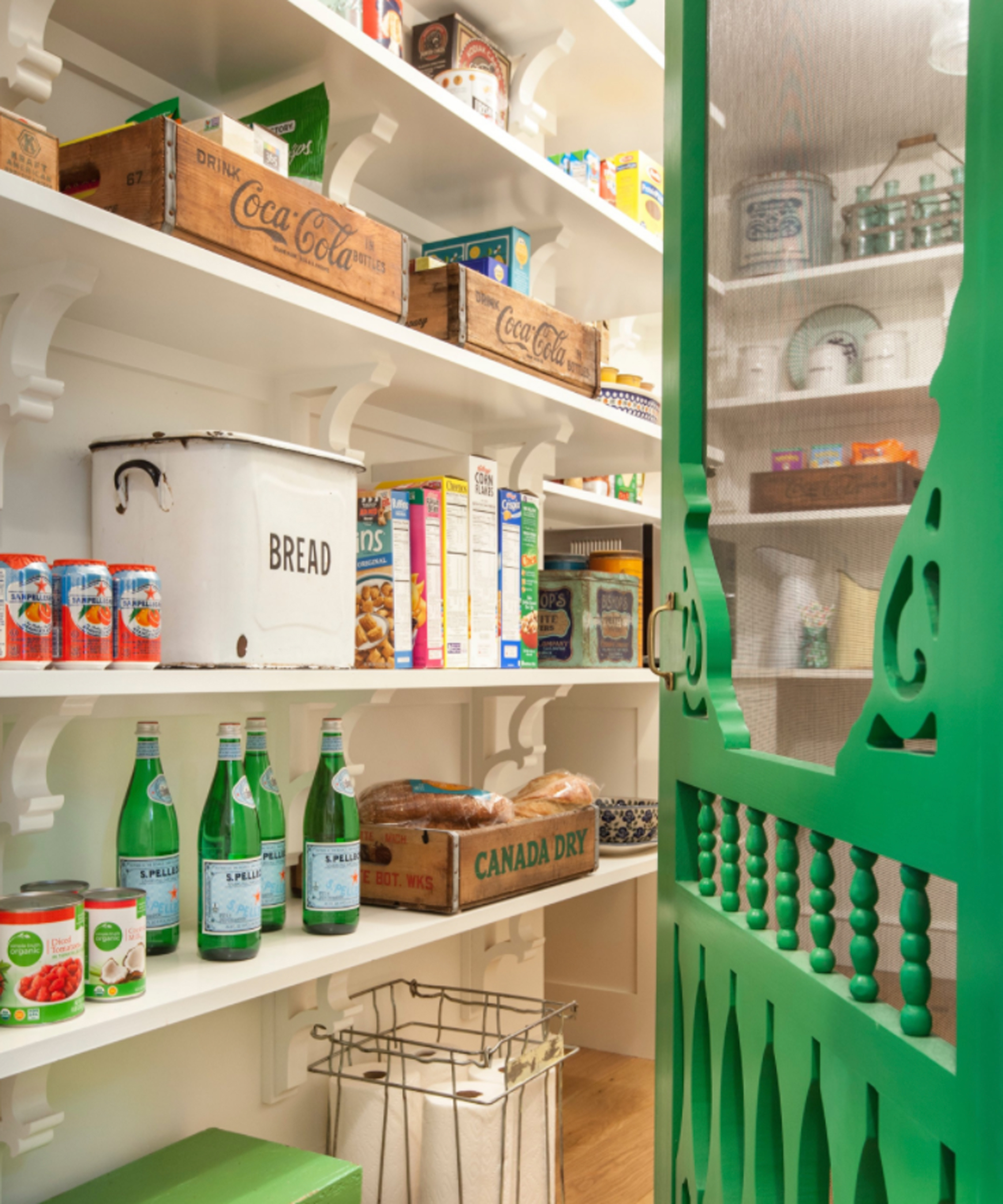
You don't necessarily need fancy storage containers on your pantry shelves. Be inspired by this brilliant walk-in pantry shelving idea by Alison Kandler Interior Design – it uses vintage soda storage crates to add a little rustic character to the pantry. This idea is also very budget-friendly and sustainable. Vintage wooden crates can be bought on Etsy.
4. Group similar items together in square shelves
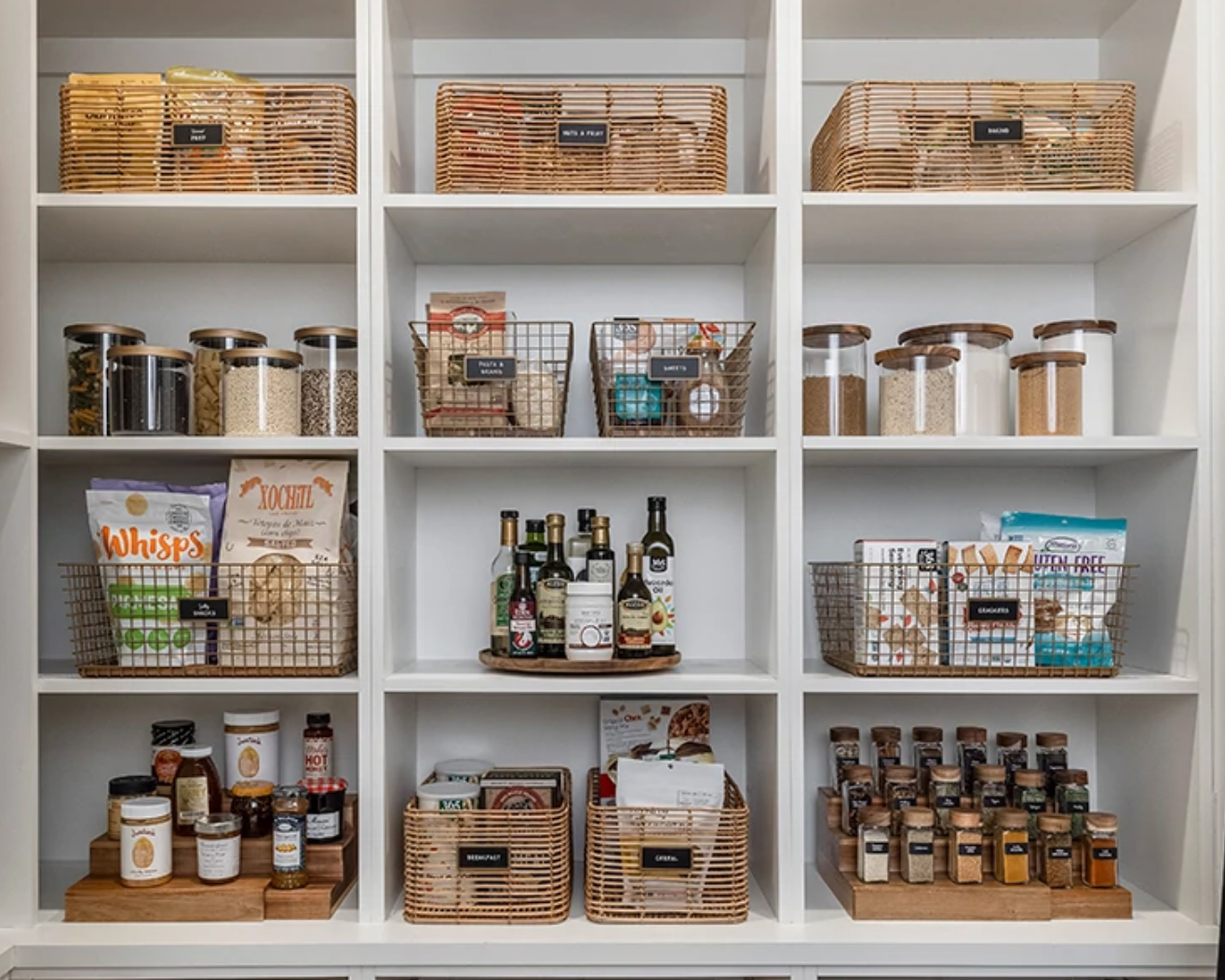
Want to organize your pantry shelves so that you never again forget where anything is? Take your cue from this extra-tidy pantry organized by Neat Method. We really like the tiered storage for condiments and spices – the tiered trays allow you to see all the spice jars at once. The round tray with sauces in the center looks great as a centerpiece.
5. Incorporate wine storage into your pantry shelving
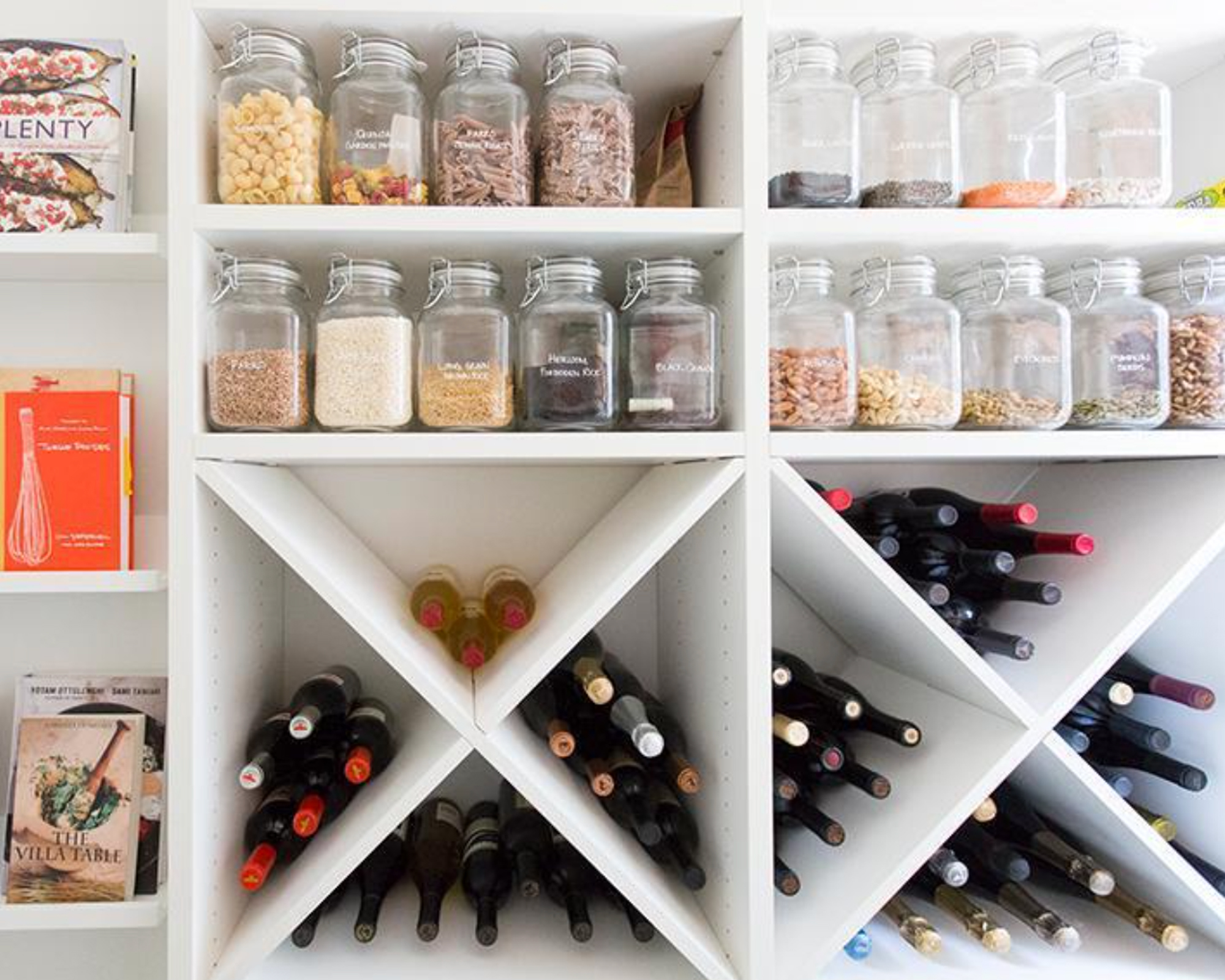
Who knew that a pantry shelving idea could also be one of the best kitchen storage ideas for wine lovers? Not everyone has a separate space for wine storage, and the pantry can provide the ideal solution – all you need to do is built x-shaped compartments for a couple of the shelves. Or, if you don't want to DIY it, you can get a wine storage rack on Amazon and just slide it in.
6. Build shelves into the pantry door for smaller items
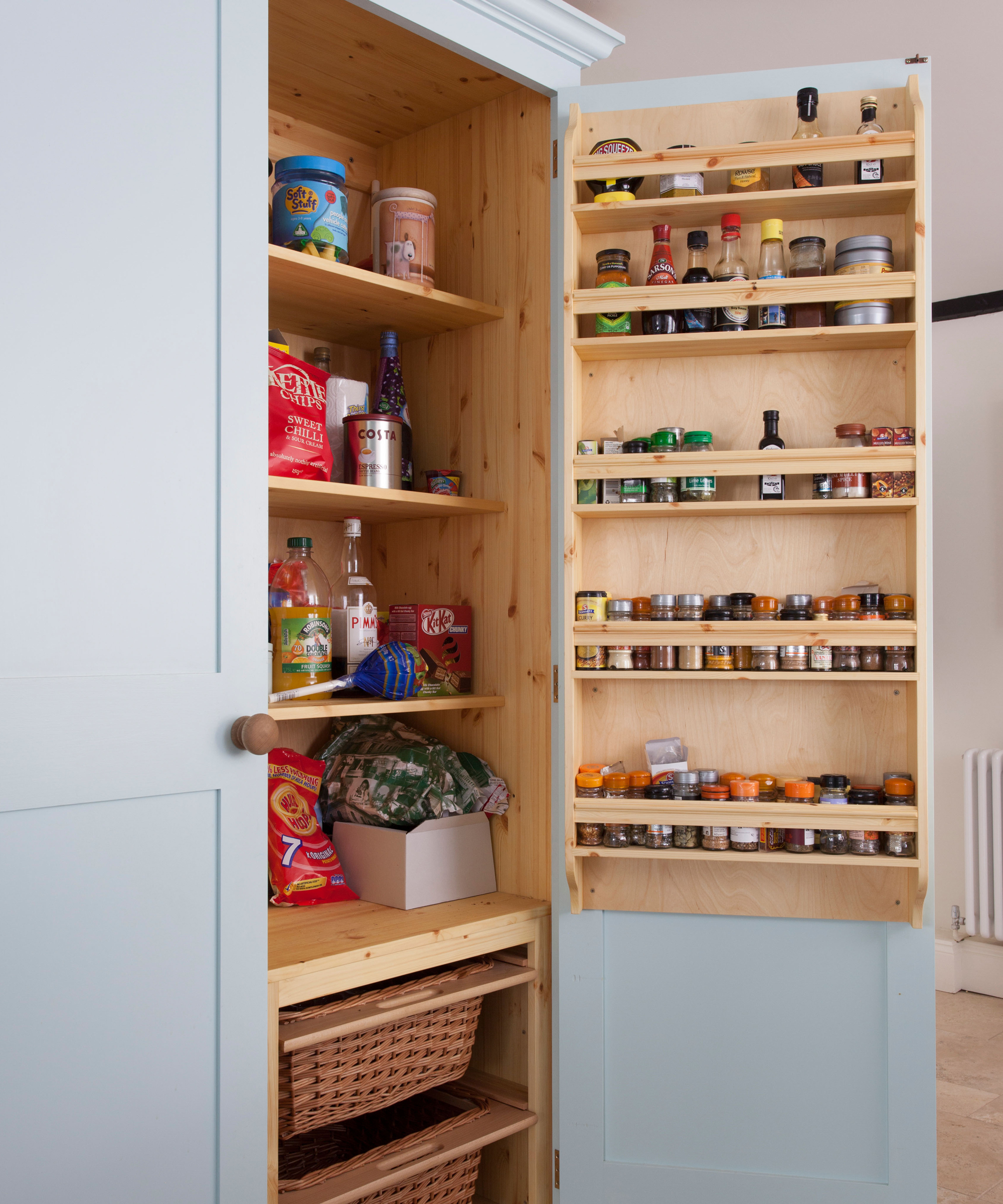
A pantry door is an opportunity not to be wasted, especially if you pantry is narrow and you don't have that much room to play with. All those little spice and herb jars can nestle in shallow shelves on the door. Or, to make life even easier, fit a door mount spice rack from Amazon onto the door.
7. Deep pantry shelves? Add portable shelving storage
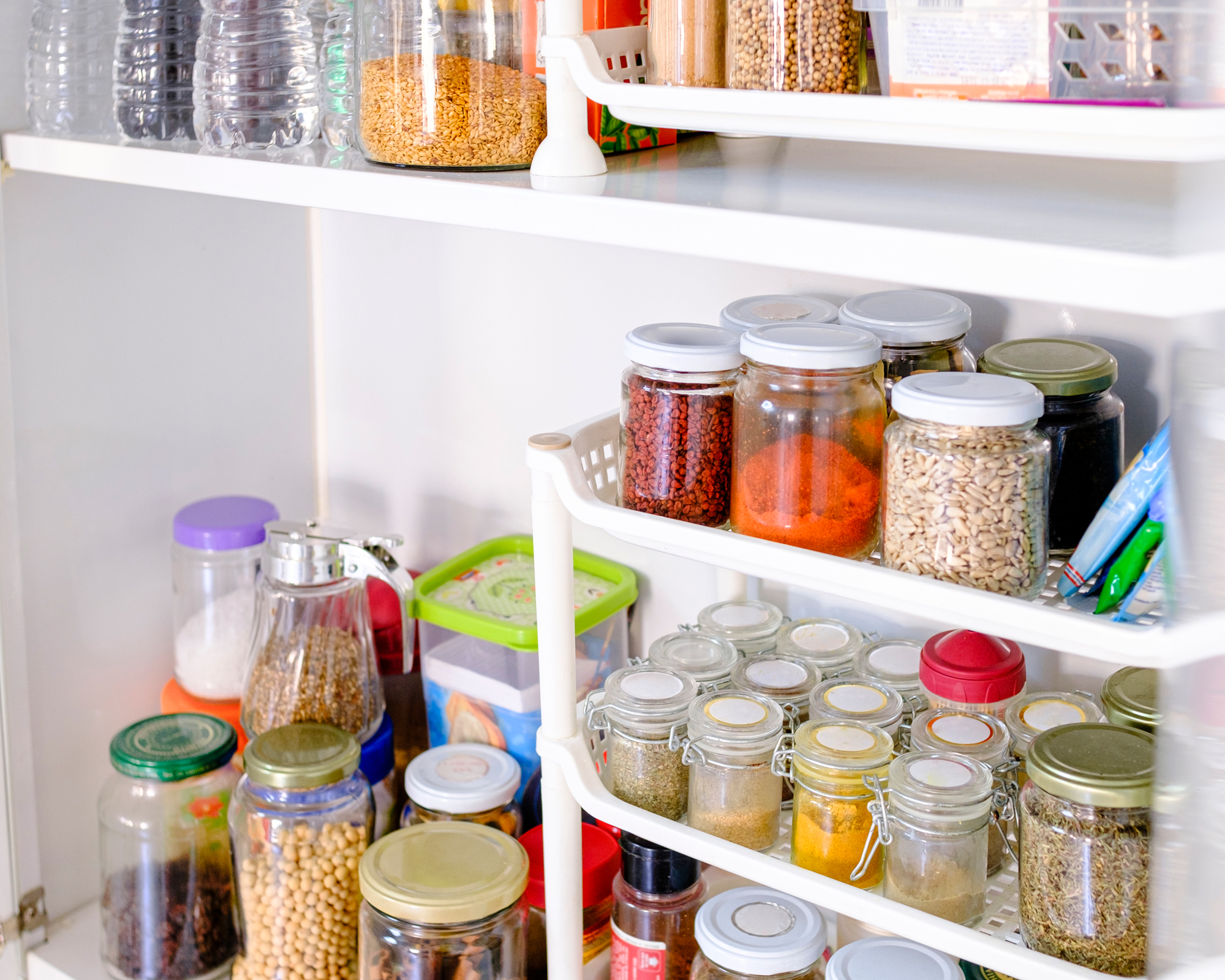
If you have deep pantry shelves that are also well spaced out, you may want to add portable shelving storage units to make them work a little bit harder. This is also easier than building in extra shelves. Ideally, choose a unit that has tray-style shelves, as these will hold your items a bit better.
8. Make the most of a corner pantry with bespoke shelves
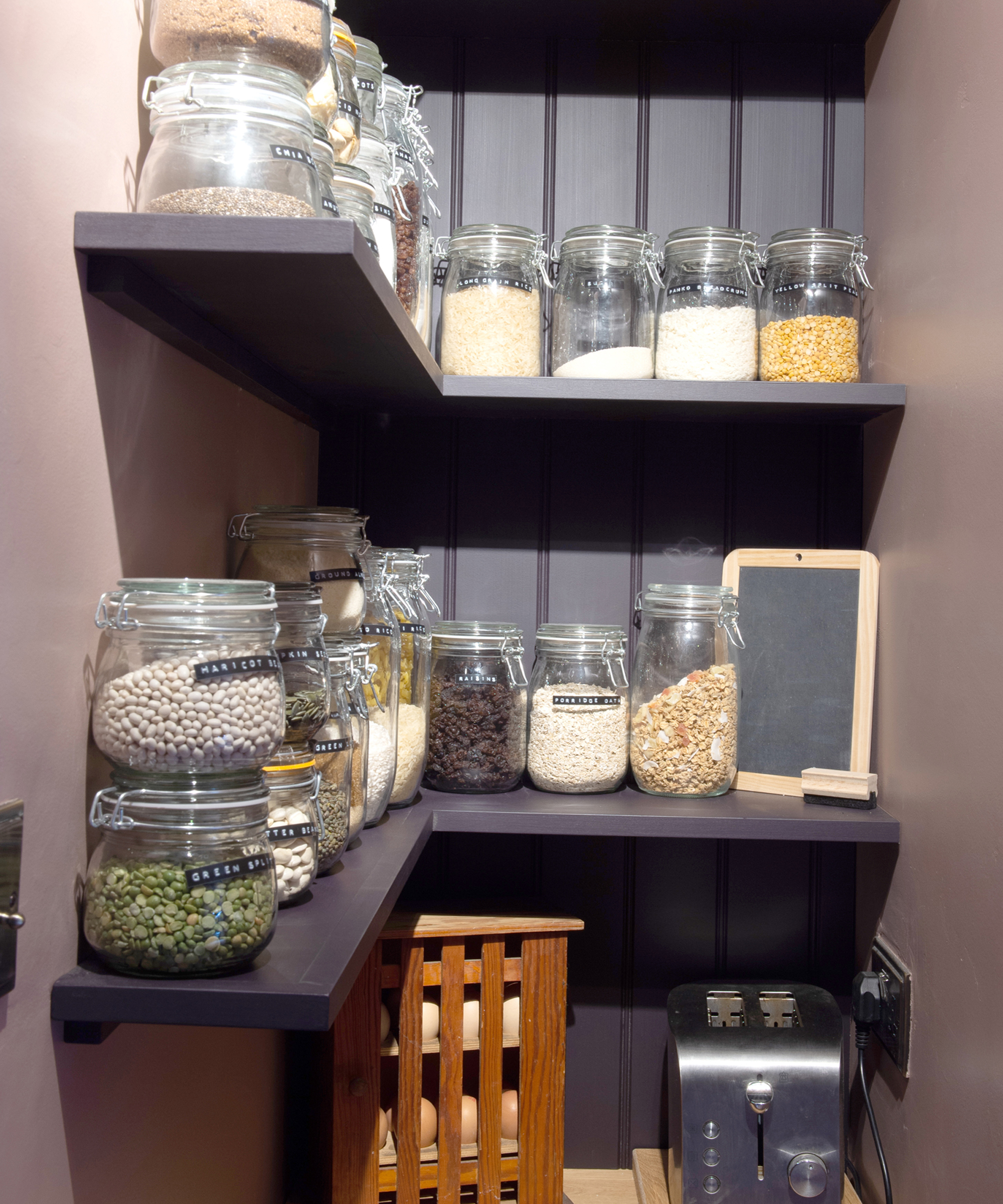
Brandt Design Heritage Furniture – starting from £25,000 +vat
Think that a pantry and small kitchen ideas are incompatible? Not necessarily. Unused corners provide excellent opportunities for creating a pantry, and well-built bespoke corner shelving can easily give you as much storage space as a regular pantry. You will want to keep your containers to taller, slimmer designs in order to waste that valuable shelving space, though.
Design-wise, a smaller pantry looks great painted in darker colors, as the bespoke example above.
9. Install pull-out shelves for easy retrieval
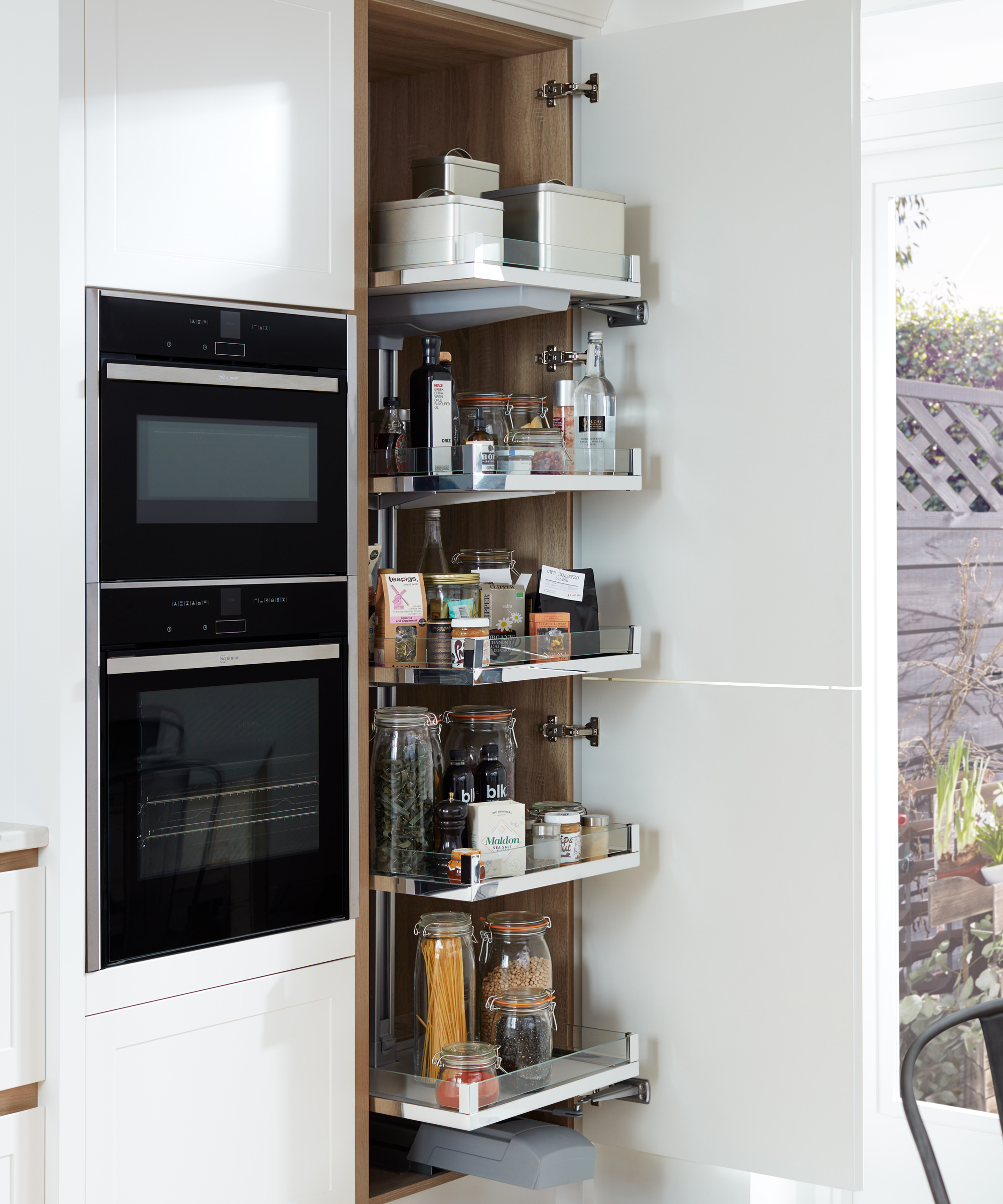
If your pantry is deep and narrow, and you have the budget for custom-built pantry shelving, consider a pull-out design. It'll save you so much time rummaging inside, trying to make out what's at the back of the shelves. You could also try fitting a sliding cabinet organizer from Amazon inside your pantry – of course, it won't look quite the same, and you'll have to be very precise with measurements for it to work.
10. Transform your pantry shelves into a coffee bar
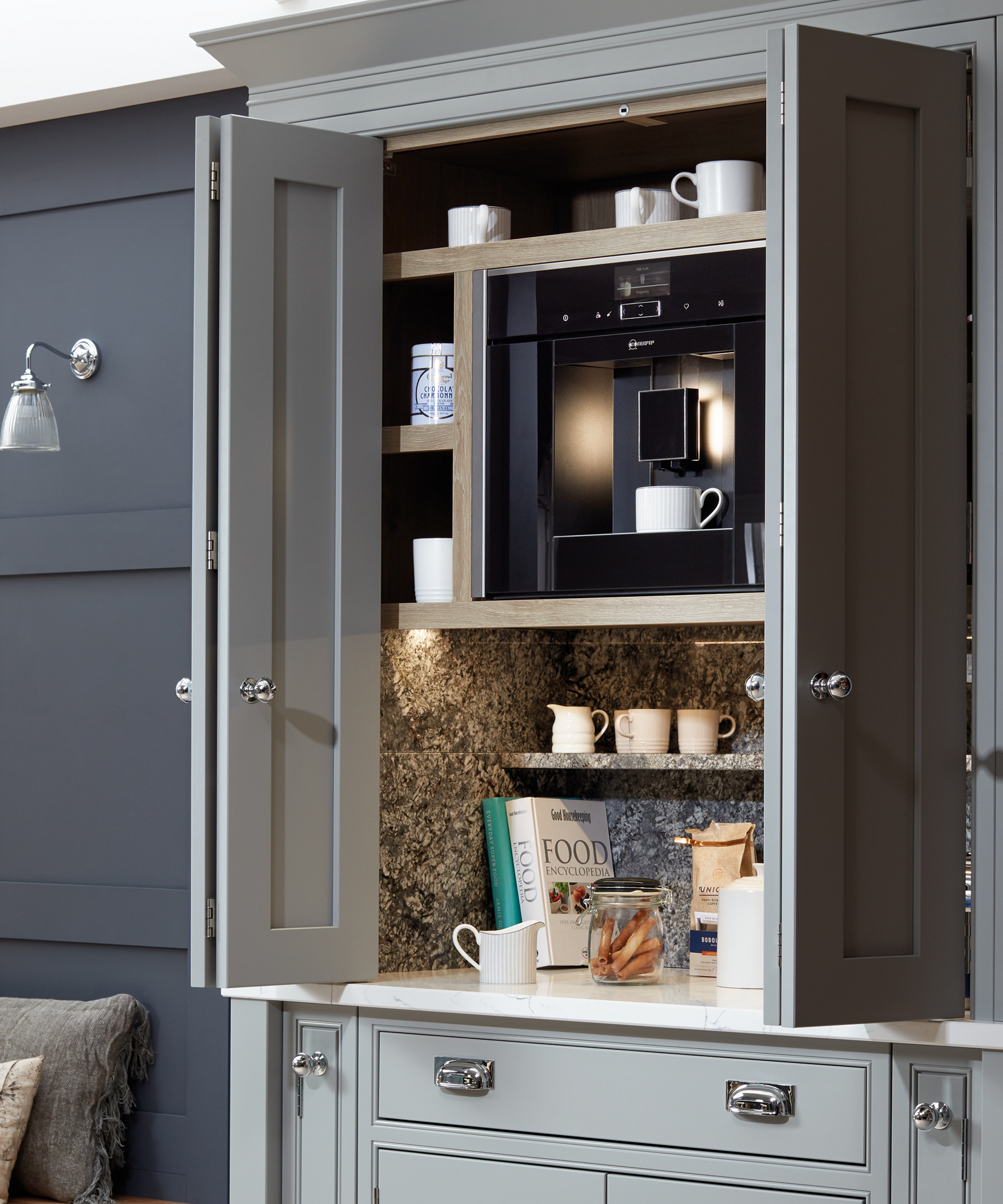
If you're not too short on space and don't actually need your pantry to store all your cooking ingredients, you could transform your pantry into a gorgeous breakfast bar. You will need sturdy, solid shelving to house your coffee machine. We really like the way this example, from Life Kitchens, uses a box shelf to store the coffee machine, with narrow shelves on the sides used for coffee mugs.
What can I use for shelves in pantry?
Julia Steadman, Commercial Director at Brandt Design, advises that 'the natural choice for a shelf in your pantry would be wood, as this type of material can be custom-fit to any size, as well as offer antibacterial qualities – ideal for an area storing food and drink.'
Of course, if you're on a tight budget, you don't have to use solid wood; you could use plywood or MDF, or even particleboard. However, do bear in mind that, with the exception of MDF, these less expensive shelving materials will take less weight, so don't plan on putting a toaster and heavy jars on top of a thinner shelf. Dor Steadman, solid wood is the clear winner for pantry shelving because it 'can also be painted in the same finish as your kitchen furniture, allowing you to achieve a truly consistent look throughout.'
How do you shelve a small pantry?
When looking to shelve a small pantry, Steadman recommends getting 'creative and only designing for what you need. For instance, make use of redundant space in your kitchen like an unused corner and transform it into a practical area to store your food cupboard staples.'
Corners are the unsung heroes of smaller kitchens, so you really should consider a corner pantry if your room is tiny. As Steadman points out, 'with the addition of a few strategically placed corner shelves, all designed at convenient heights, you will be able to create a dedicated space for non-perishable items so that your kitchen cupboards can concentrate on maximizing utility in the main work zones.'
Join our newsletter
Get small space home decor ideas, celeb inspiration, DIY tips and more, straight to your inbox!
Anna is a professional writer with many years of experience. She has a passion for contemporary home decor and gardening. She covers a range of topics, from practical advice to interior and garden design.
-
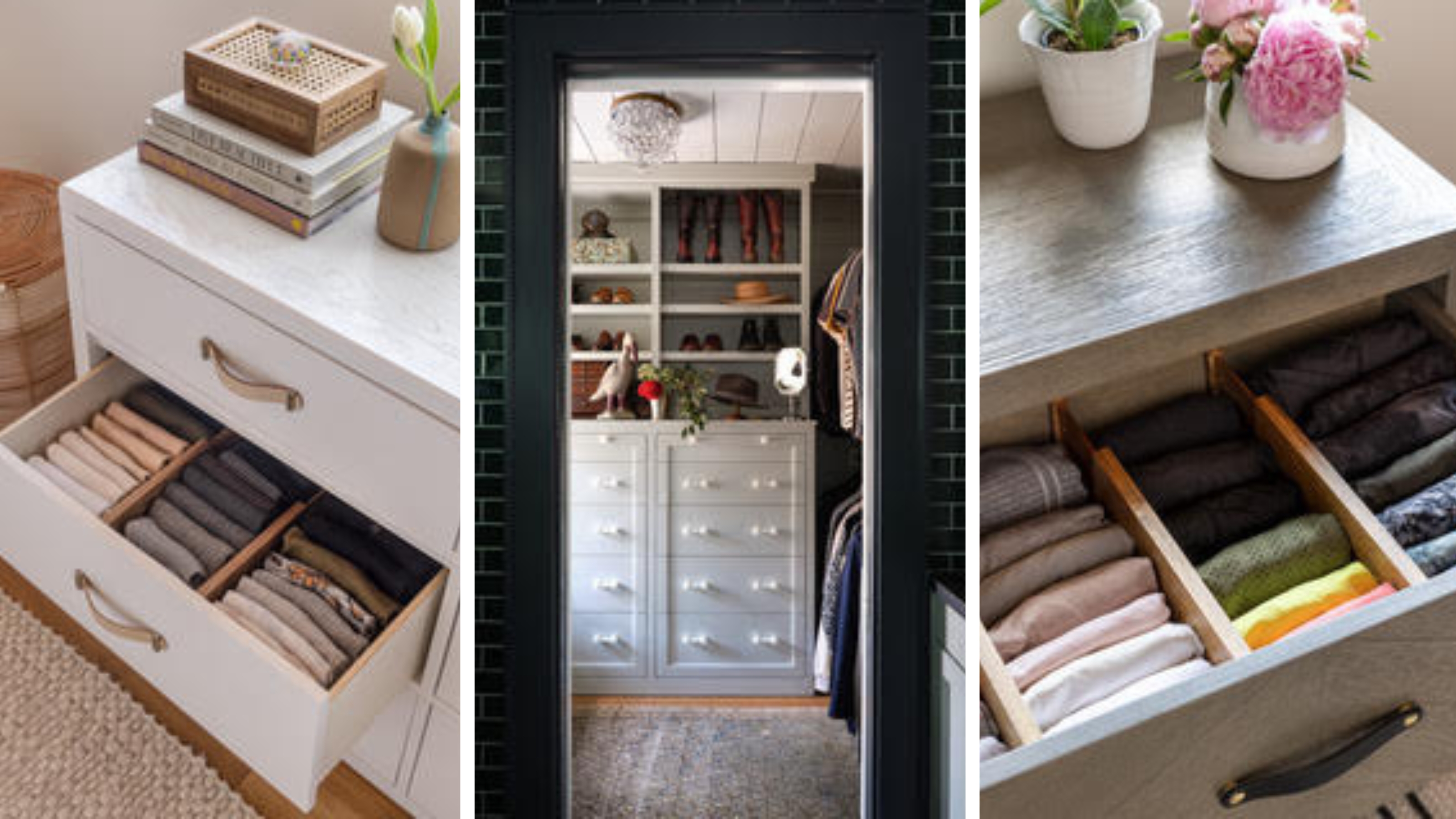 How to organize a dresser — 10 ways to get your drawers in order
How to organize a dresser — 10 ways to get your drawers in orderSay goodbye to overflowing drawers by learning how to organize a dresser so it's neat, tidy and well-ordered. Here's how to do it, according to the pros
By Tara King Published
-
 13 blanket storage ideas — space-efficient strategies
13 blanket storage ideas — space-efficient strategiesThese blanket storage ideas will help you stash throws and comforters around the house with nifty ideas for the bedroom, living room, and more
By Sarah Warwick Published
-
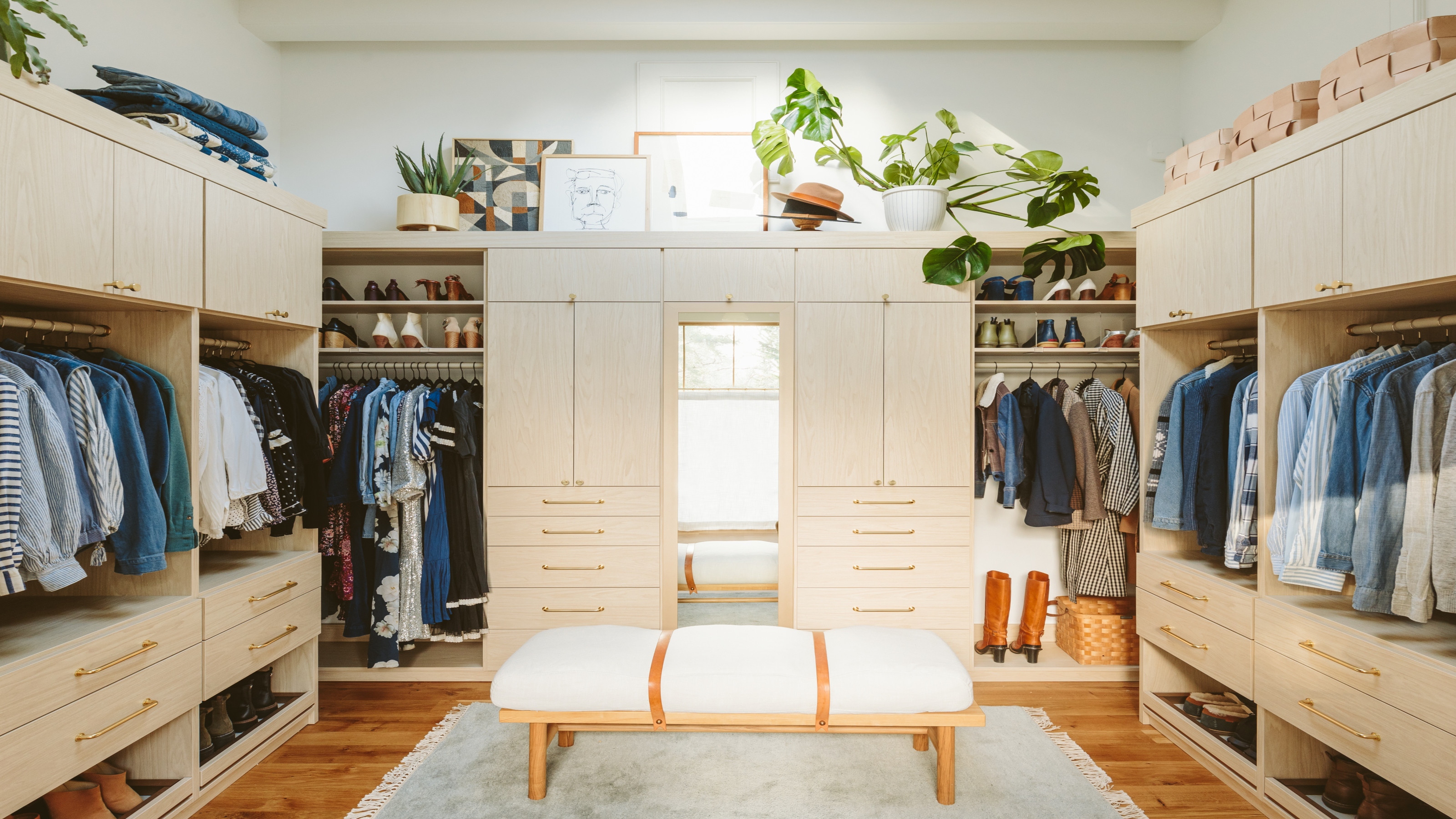 How to organize a walk-in closet — 15 ways to showcase your style
How to organize a walk-in closet — 15 ways to showcase your styleOur pros reveal how to organize a walk-in closet for a neat and tidy display of clothes, shoes, and accessories. Experts share their top organization tips
By Tara King Published
-
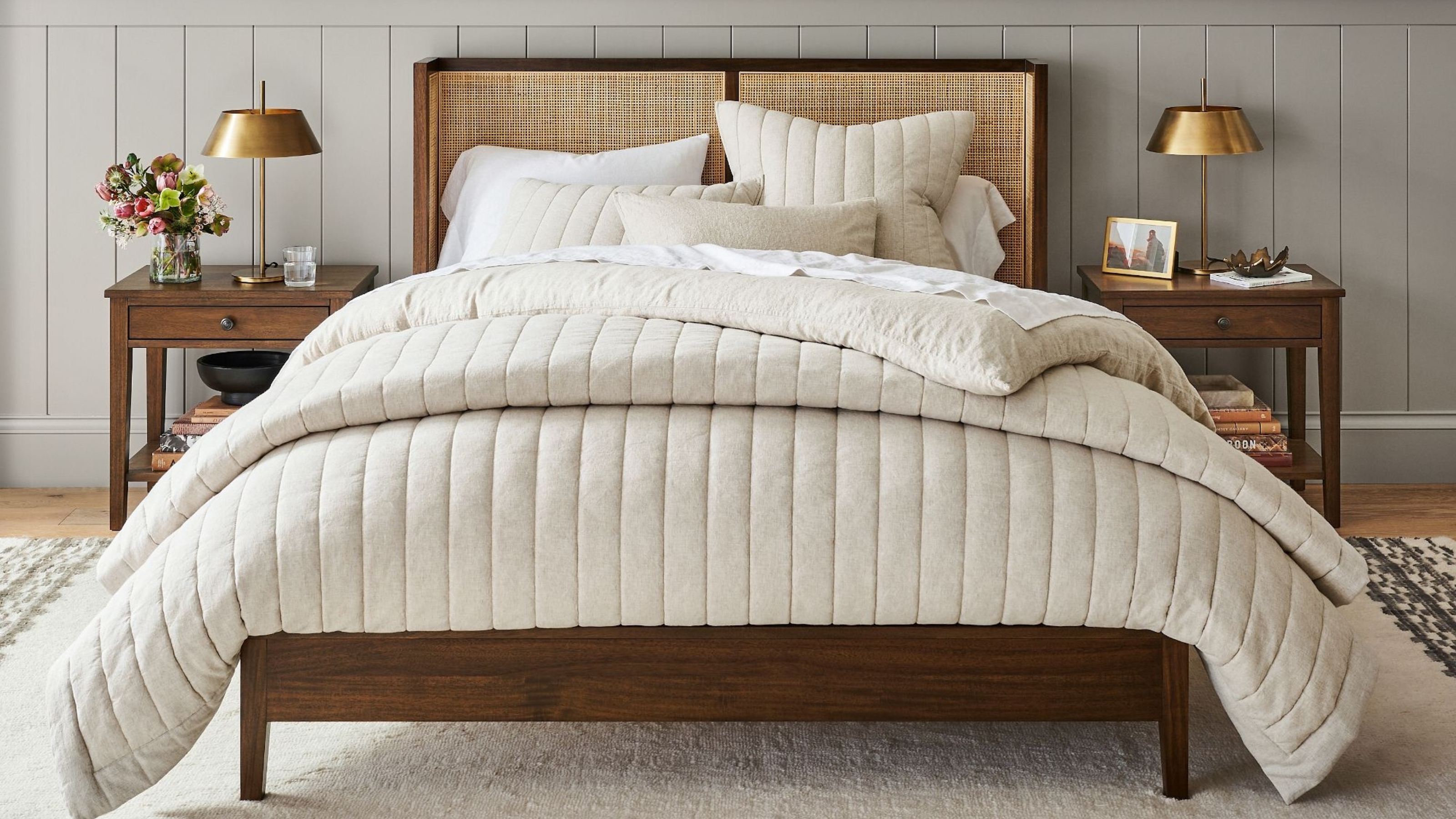 10 comforter storage ideas — expert ways to stash
10 comforter storage ideas — expert ways to stashDiscover comforter storage ideas approved by experts. See the best ways to stash this bulky item around the house so it's out of sight, out of mind
By Sarah Warwick Published
-
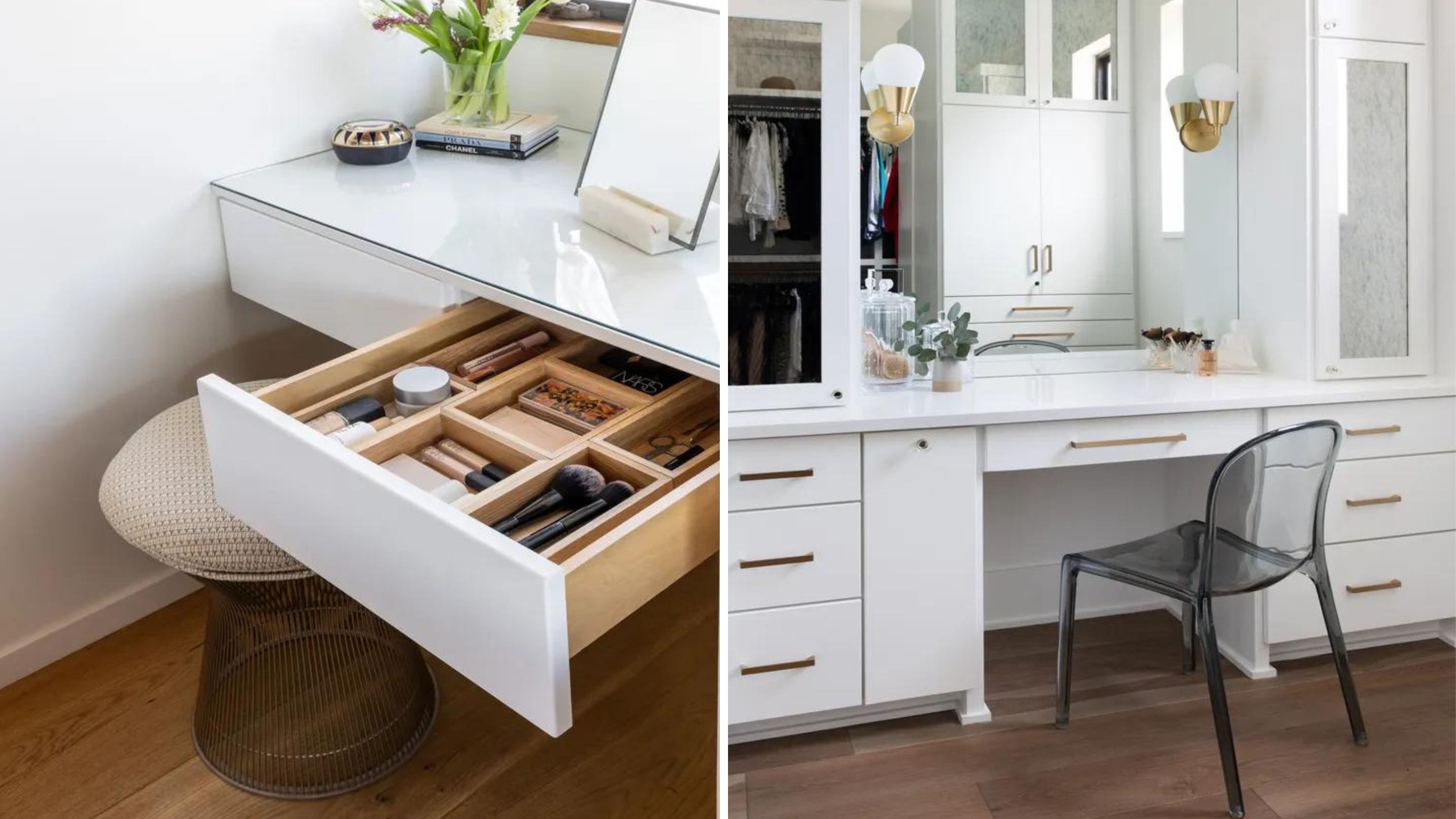 How to organize a vanity — 10 ways to tidy
How to organize a vanity — 10 ways to tidyLearn how to organize a vanity in the same way you would your beauty routine — think simple, neat, and easy to maintain. Here's how the pros do it
By Tara King Published
-
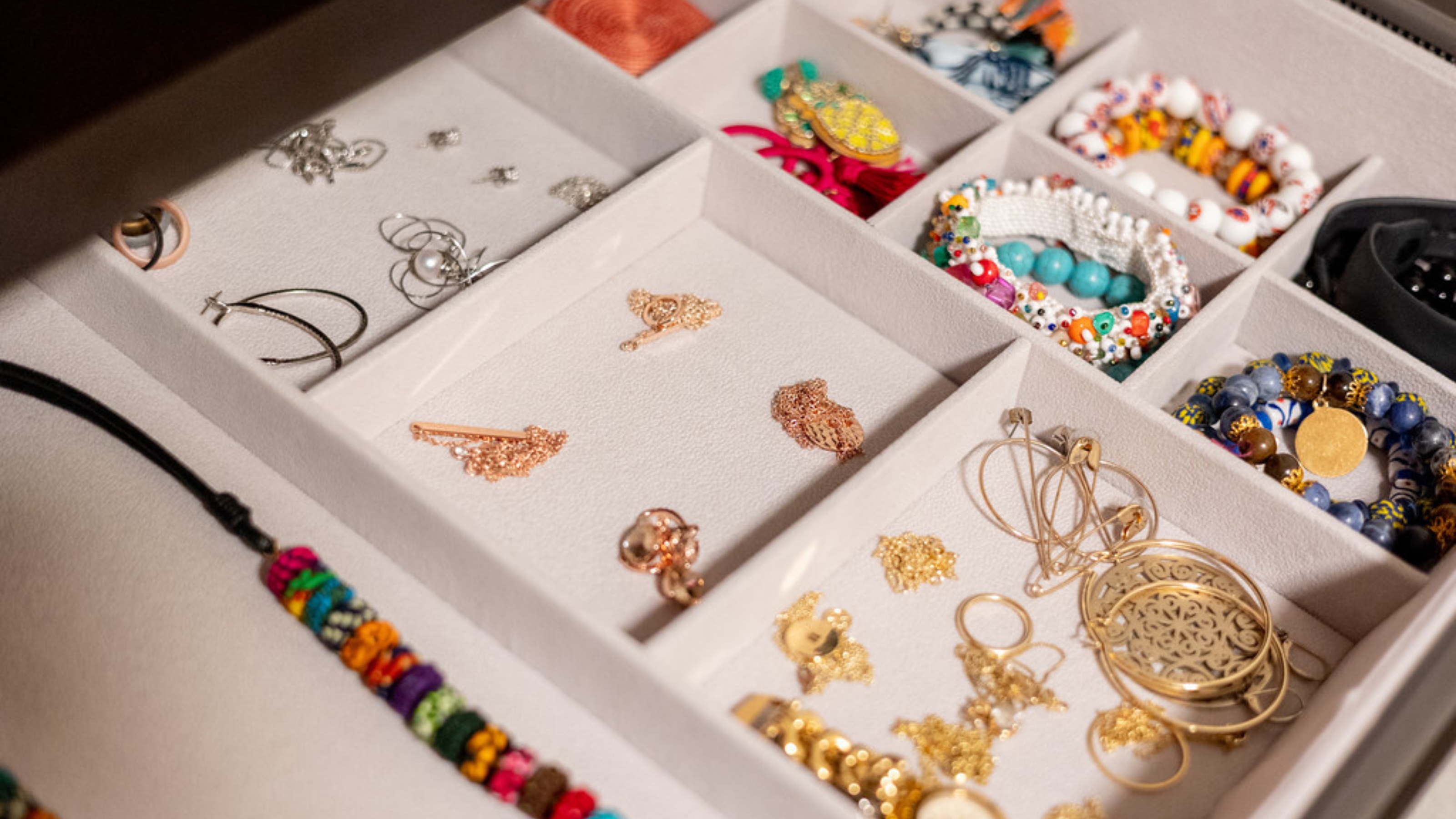 How to organize jewelry like the experts — say goodbye to tarnished rings and tangled necklaces
How to organize jewelry like the experts — say goodbye to tarnished rings and tangled necklacesLearn how to organize jewelry to avoid tarnishes, tangles, and increase longevity. Our pro organizers and fine jewelry experts share their best industry tips
By Punteha van Terheyden Published
-
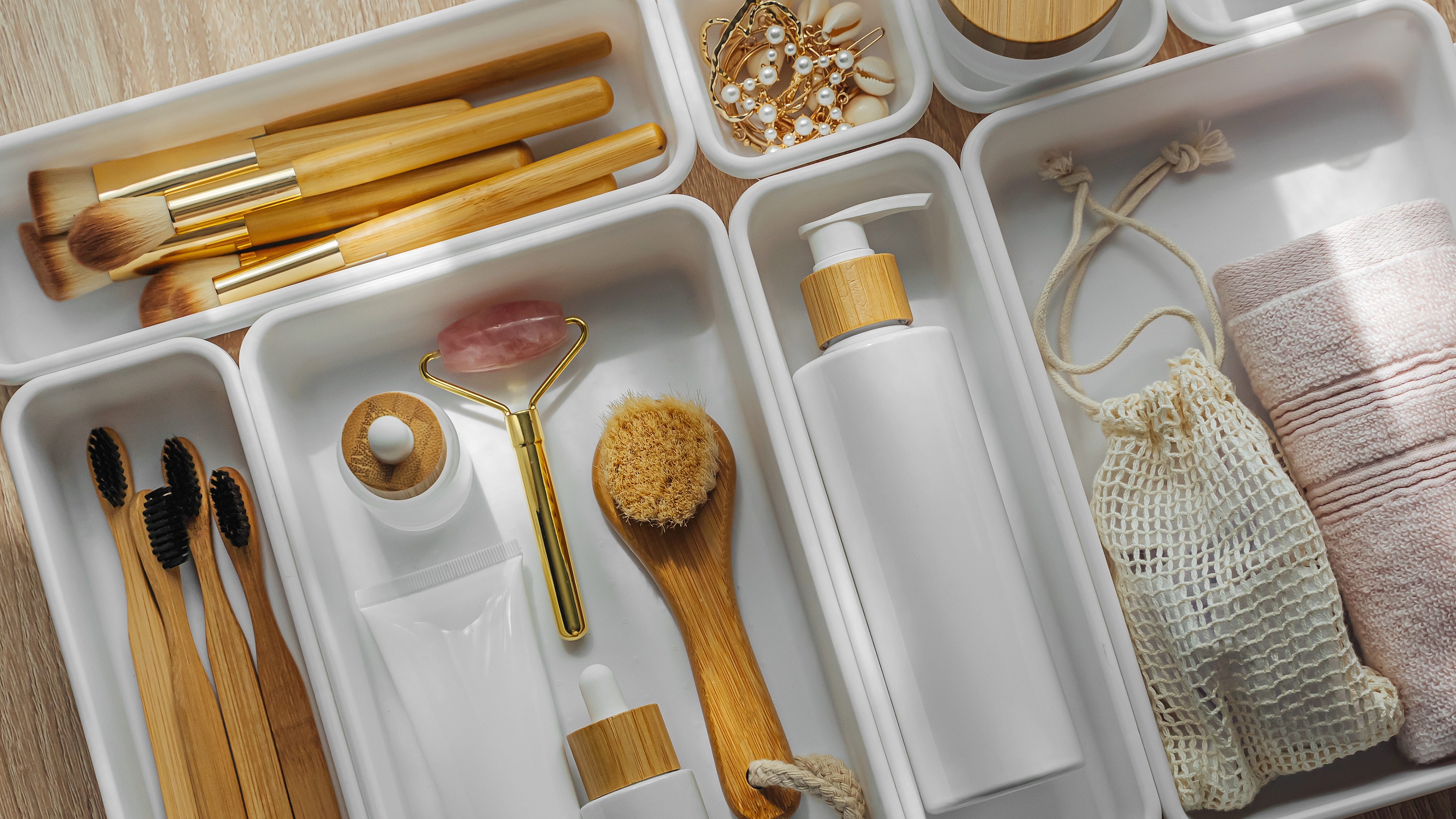 How to organize bathroom drawers — 4 easy steps to streamlined storage
How to organize bathroom drawers — 4 easy steps to streamlined storageLearning how to organize bathroom drawers will give you big return on function. Our experts swear by these tips for ordered bathroom drawers
By Beth Mahoney Published
-
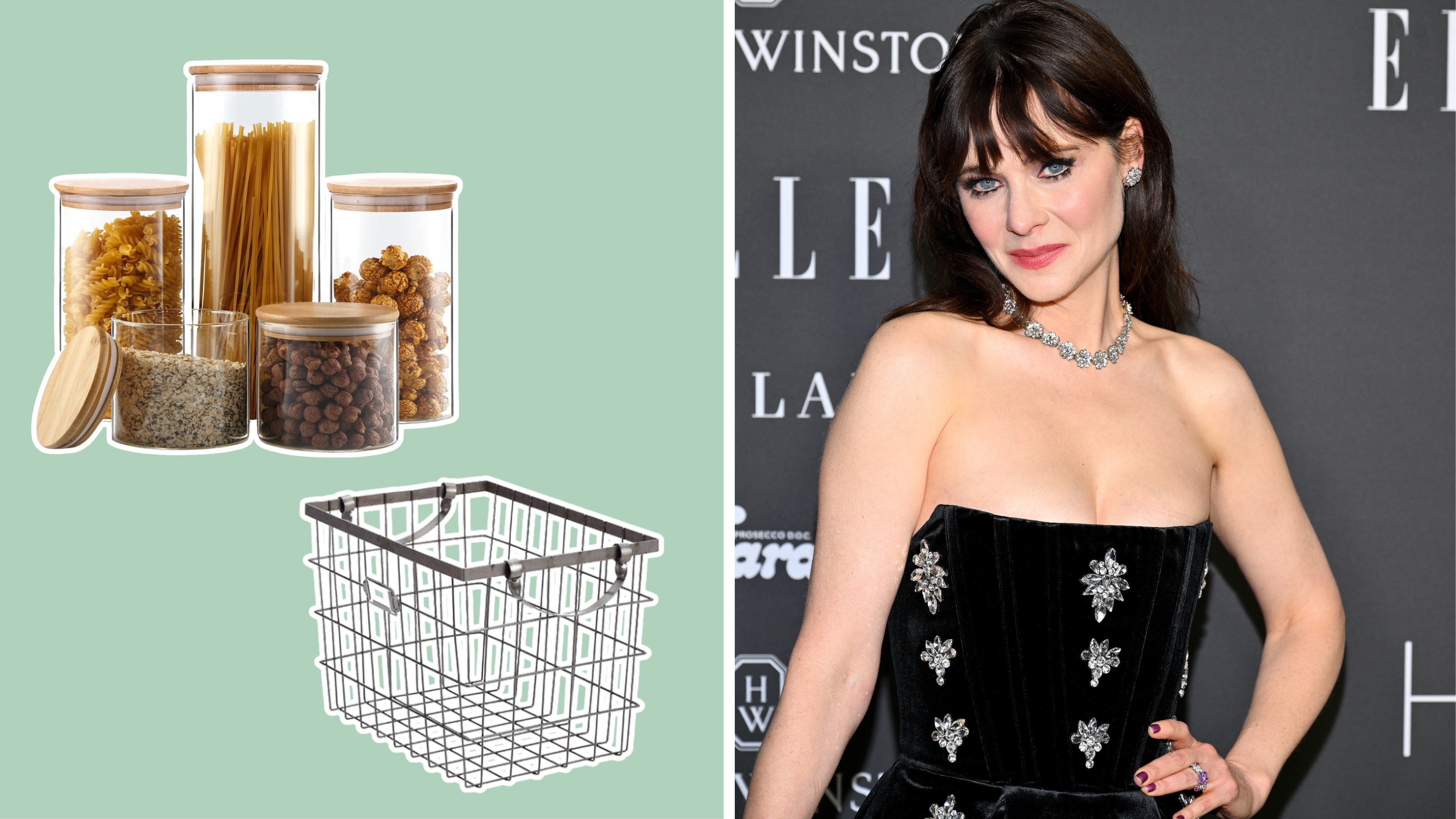 Zooey Deschanel's pantry is an organizer's dream — here's how to recreate the look
Zooey Deschanel's pantry is an organizer's dream — here's how to recreate the lookZooey Deschanel's pantry is an organizer's dream. We break down how to recreate the look to organize your snacks, cooking ingredients, and more
By Emily Lambe Published